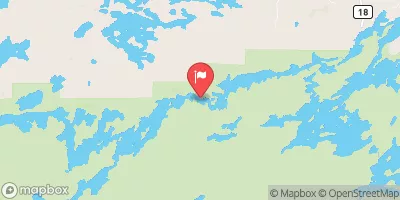Summary
The lake is home to a variety of fish species, including walleye, northern pike, largemouth bass, bluegill, crappie, and yellow perch.
The best time to visit Little Rice Lake for fishing is during the summer months, from June to August. During this time, the average temperature ranges from 70 to 80 degrees Fahrenheit, making it comfortable for anglers to spend extended periods on the water.
Anglers can find success on Little Rice Lake using a variety of techniques. For walleye, trolling with a crawler harness or jigging with a minnow or leech is recommended. Northern pike can be caught using spinnerbaits or topwater lures. Largemouth bass can be caught using crankbaits or plastic worms. Bluegill and crappie can be caught using small jigs or live bait such as worms or crappie minnows.
In addition to fishing, Little Rice Lake offers a variety of other activities for visitors. There are several campgrounds and resorts located around the lake, offering accommodations for those looking to stay overnight. There are also hiking trails, swimming beaches, and picnic areas available for use.
Overall, Little Rice Lake is a great destination for anglers looking for a variety of fish species and other outdoor activities. With its beautiful scenery and excellent fishing opportunities, it is a must-visit location for any angler in Minnesota.
Weather Forecast
Nearby Streamflow Levels
 South Kawishiwi R Abv White Iron Lake Nr Ely
South Kawishiwi R Abv White Iron Lake Nr Ely
|
227cfs |
 South Kawishiwi River Near Ely
South Kawishiwi River Near Ely
|
119cfs |
 Vermilion River Nr Crane Lake
Vermilion River Nr Crane Lake
|
100cfs |
 Kawishiwi River Near Ely
Kawishiwi River Near Ely
|
54cfs |
 Basswood River Near Winton
Basswood River Near Winton
|
384cfs |
 Prairie River Near Taconite
Prairie River Near Taconite
|
63cfs |
Angling Safety Guidelines
Check local fishing rules, seasons, size limits, and license requirements to ensure legal and sustainable angling.
Handle Fish Responsibly
Use wet hands, minimize air exposure, and release fish gently to improve survival rates when practicing catch-and-release.
Choose the Right Gear
Match your rod, line, and tackle to the species and conditions to increase success and reduce unnecessary harm to fish.
Respect the Waterway
Avoid disturbing habitat, prevent bank erosion, and keep a safe distance from spawning areas to protect ecosystems.
Keep It Clean
Pack out all line, hooks, bait containers, and trash—discarded gear can injure wildlife and degrade waterways.

 Big Rice Lake
Big Rice Lake
 Pfeiffer Lakes -USFS
Pfeiffer Lakes -USFS
 Pfeiffer Lake Campground & Backcountry Sites
Pfeiffer Lake Campground & Backcountry Sites
 Pfeiffer Lake
Pfeiffer Lake
 Hoodoo Point City Campground
Hoodoo Point City Campground
 McKinley Park Campground
McKinley Park Campground
 Pike River
Pike River